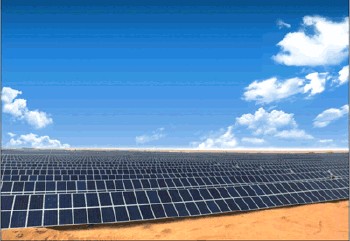 The trade war delayed market growth in 2013, and the installed capacity in 2014 was restored by 25%. The growth of European traditional photovoltaic markets (such as Germany and Italy) or adjustment of FIT policies, or restrictions on subsidies expenditure, the market will shrink in 2013, at the same time, the global trade war ( Europe and the United States will raise the price of photovoltaic systems, so that the market will produce a wait-and-see mood, so we expect the global installed capacity in 2013 to grow at a rate of 10-15%. However, the trade war has only slowed down growth, instead of stifling demand. Emerging countries such as China, Japan, and India have demonstrated the base effect in 2014. Therefore, we remain optimistic about the global market in 2014, and the growth rate is expected to recover to more than 25%.
The trade war delayed market growth in 2013, and the installed capacity in 2014 was restored by 25%. The growth of European traditional photovoltaic markets (such as Germany and Italy) or adjustment of FIT policies, or restrictions on subsidies expenditure, the market will shrink in 2013, at the same time, the global trade war ( Europe and the United States will raise the price of photovoltaic systems, so that the market will produce a wait-and-see mood, so we expect the global installed capacity in 2013 to grow at a rate of 10-15%. However, the trade war has only slowed down growth, instead of stifling demand. Emerging countries such as China, Japan, and India have demonstrated the base effect in 2014. Therefore, we remain optimistic about the global market in 2014, and the growth rate is expected to recover to more than 25%. Batteries In the third quarter of 2013 or at the bottom of the industry, the proportion of photovoltaic products exported from Europe and North America in China reached 73% in 2011. The US “double reverse†has been finalized. The EU and India also launched the “double reverse†investigation. We anticipate that the EU will The preliminary ruling of the offense will be announced in the 2nd or 3rd quarter of 2013, and the possibility of its establishment will be greater. The cost-performance advantage of the Chinese battery components will no longer exist. At present, China's first-line cell module production capacity is approximately 20GW. Assuming that there is only 50% effective market in the world, the issue of overcapacity will be expanded, the industry consolidation speed will accelerate, and the battery module companies will usher in the most difficult period, and the bottom of the industry will appear.
The downward trend of industrial chain prices remained unchanged, and profitability remained at the bottom of the year to date. Polysilicon prices fell the most, reaching 49%. Prices of wafers, cells, and modules decreased by about 30%. Overcapacity and flat demand growth were the main reasons. In the short term, prices will continue to decline slightly, mainly due to the supply and demand relationship. At the same time, the profitability of the industry chain has reached the bottom. The destocking of first-tier companies has become more reasonable, and the possibility of a sharp fall is smaller; The increase in product efficiency and use of materials will inevitably bring about a reduction in costs. The future price reduction will be more from the cost side. Therefore, as long as the problem of overcapacity persists, there will always be downward pressure on the price and cost difference. Corporate earnings will remain at the bottom.
The export of high-efficiency wafers is expected to grow, and the profitability is stable: China Central’s US “double reverse†is only for batteries, not including silicon wafers. Although the EU’s anti-dumping investigation includes silicon wafers, domestic wafer companies can still export to North America, Japan, and the Philippines. Such as third-country battery module companies, affected in the entire industry chain most schools in 2011 silicon material prices fell by about 50%, greater than the decline in silicon wafers (about 30%), the market cost and price difference expanded so that the profitability of silicon wafers in the industry The chain is relatively strong. At the same time, as the non-silicon cost continues to decline, the profitability of wafers in 2013 is expected to remain relatively strong.
At present, the spot price of polysilicon is consistent with the contract price, and the competitiveness of companies focusing on silicon wafer technology manufacturing is strengthened. In the first half of 2012, Manchuria has begun to export shares, Comtec exports increased, Central and Sunpower cooperation, there are future export expectations, it is recommended to pay attention to Central shares.
The direct beneficiaries of the start of the domestic market: Sunshine Power issued a series of policies including PV grid-connected and distributed energy in 2012. At the same time, it announced a “double counter†survey on imported polysilicon, reflecting the management’s support for the domestic PV manufacturing industry. Willingness is obvious. At present, the western power station ROE has reached 10-12%, which is 2% higher than the beginning of the year. The drop in the future on-grid electricity price will be a high probability event. In 2013, it is expected that there will be a surge in installation. Photovoltaic “Twelfth Five Year†installed capacity is very likely to be adjusted from 21GW to 40GW. I expect that the national installed capacity in 2013 is expected to reach 8-10GW, promising domestic solar inverter power supply
Aluminium Panel,Aluminum Roof Panels,Aluminum Composite Panel,Aluminium Composite Panel Price
SHAOXING YOTO IMPORT&EXPORT CO., LTD , https://www.sxyotoes.com